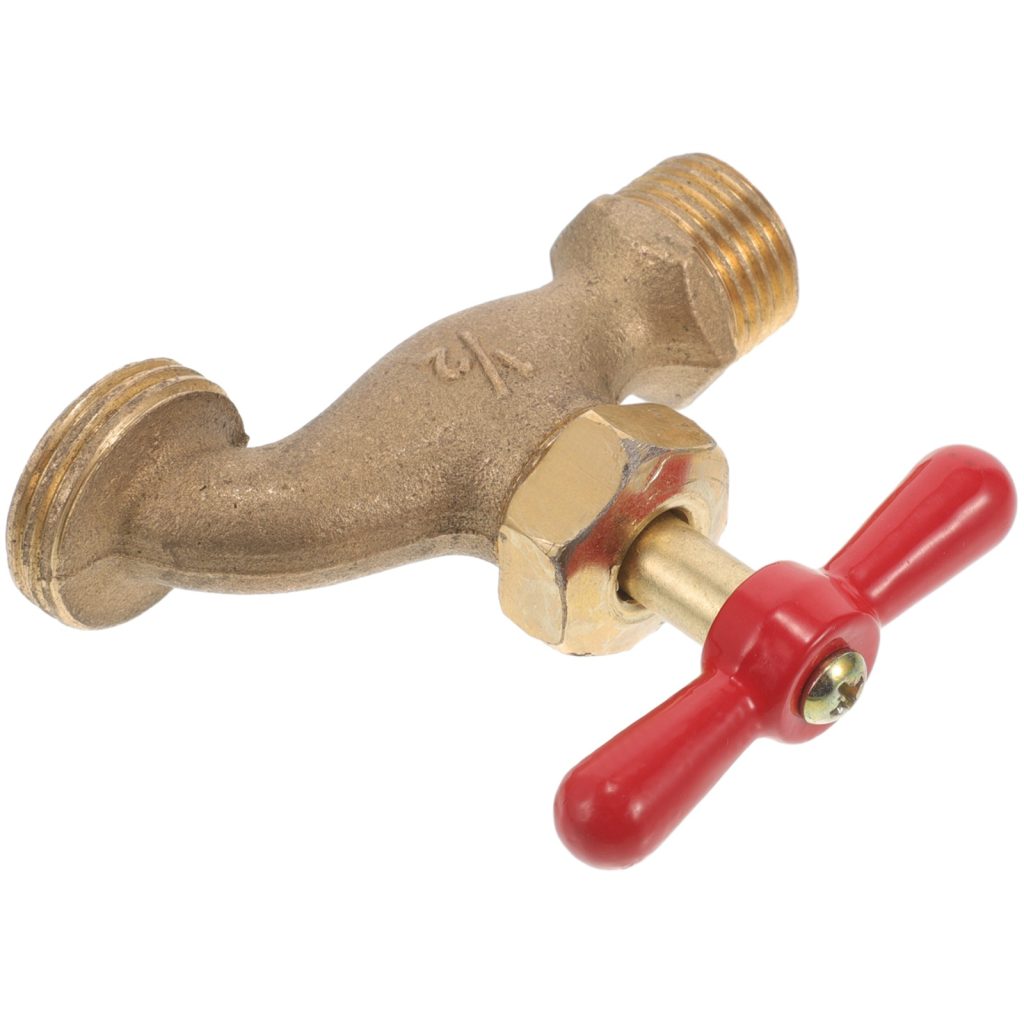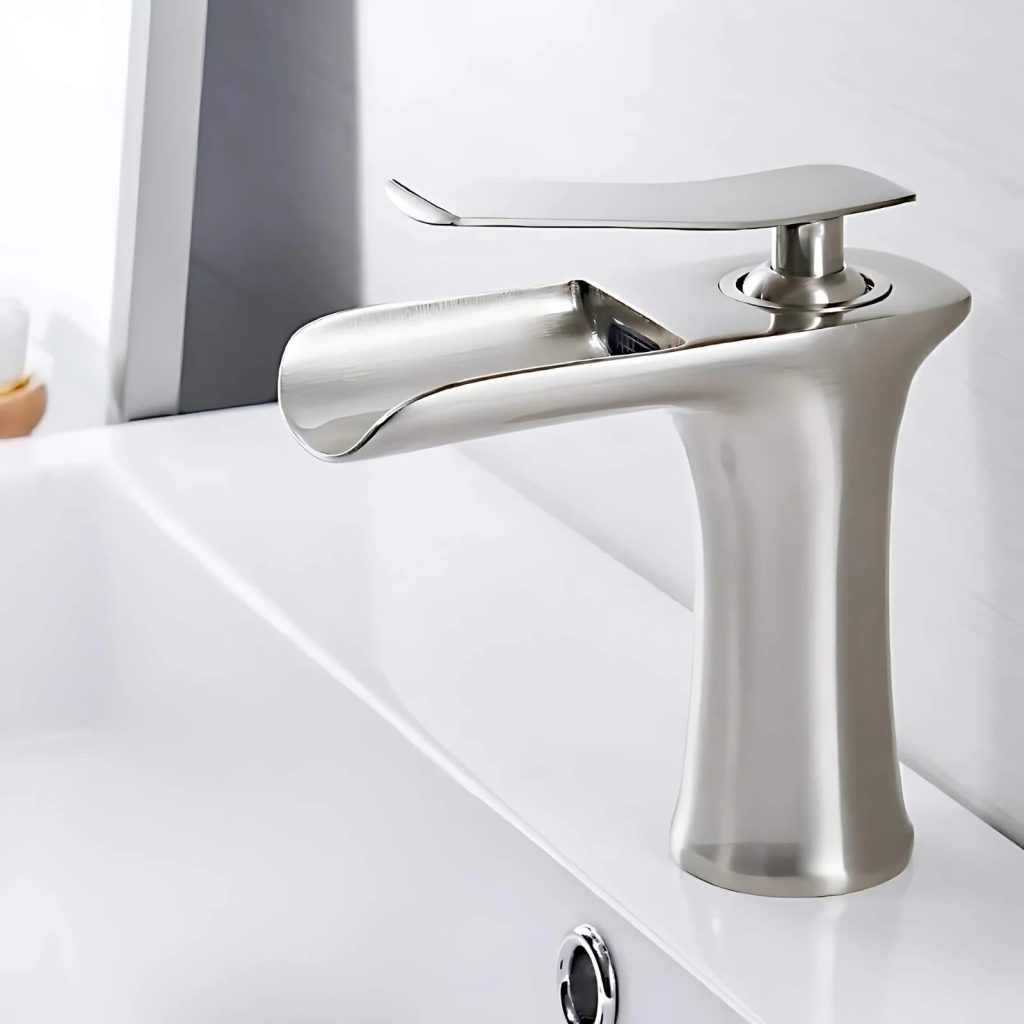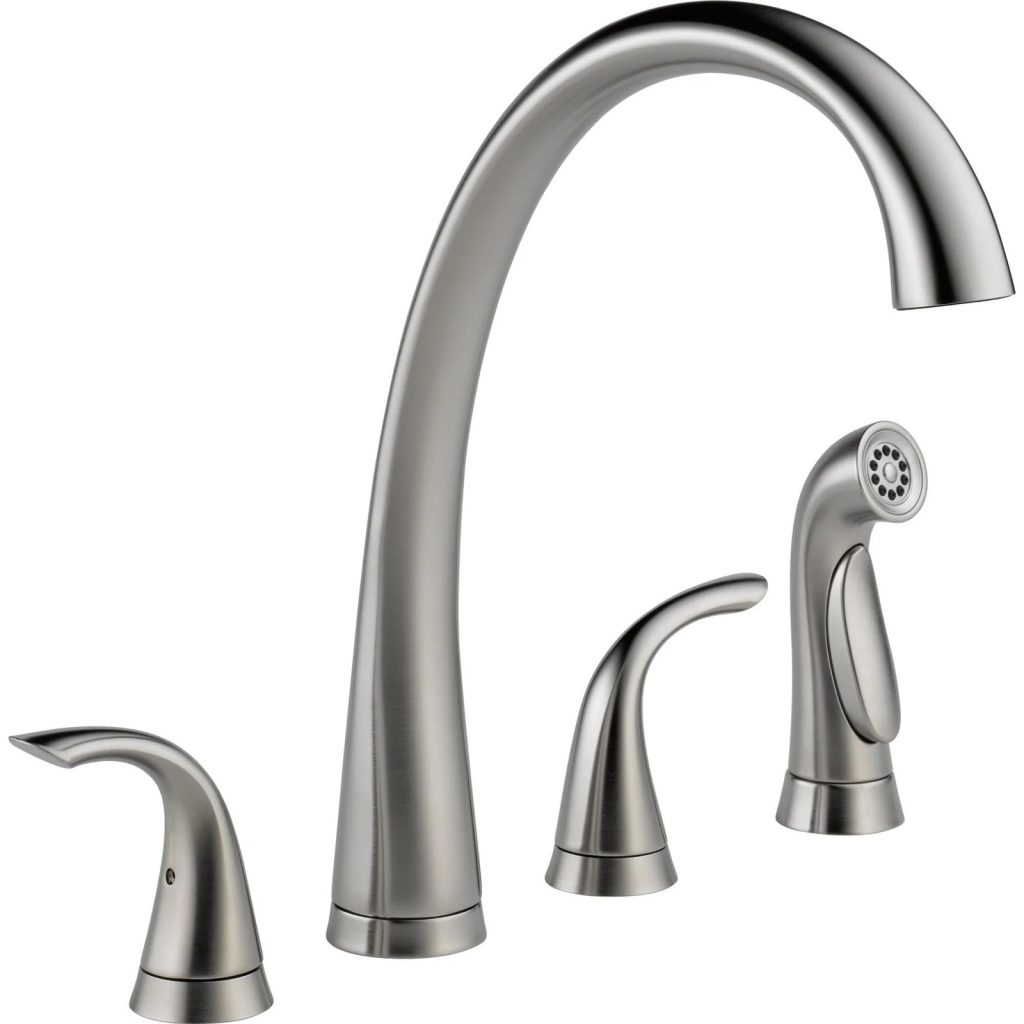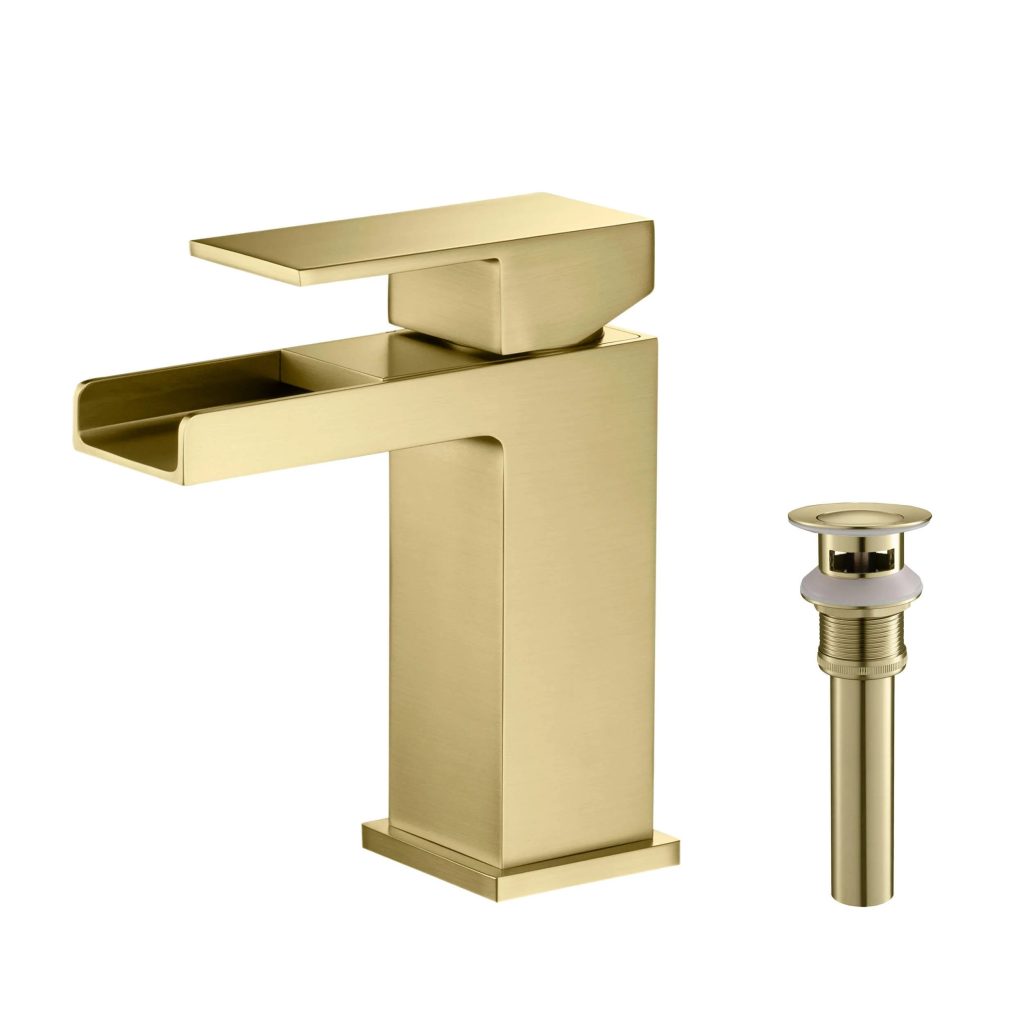Introduction to Calcium Buildup on Faucets
How to get calcium deposits off faucets? Calcium buildup, often white and chalky, is common on faucets. It is unsightly and can diminish water flow. This buildup, also known as limescale, is due to minerals in the water. Specifically, it comes from dissolved calcium salts like calcium carbonate or bicarbonate. The condition often occurs in areas with hard water. As water evaporates, minerals stay behind, clinging to your faucets. This effect increases over time if we neglect cleaning.

Causes of Calcium Deposits on Faucets
Calcium deposits often form on faucets due to hard water. Hard water contains high levels of dissolved minerals, such as calcium and magnesium. These minerals can leave behind a residue when water evaporates or dries. Faucets, being often in contact with water, are common places for these deposits to accumulate.
Initial Cleaning Steps for Minor Calcium Deposits
When you notice small, unsightly white spots on your faucets, it’s likely minor calcium deposits. Starting with simple cleaning can often resolve this without much hassle. It’s best to tackle these spots before they turn into a larger issue. Here’s how to get started.
- Wipe down the faucet. Begin by thoroughly cleaning your faucet with soap and water. This helps remove any surface dirt and grime, making calcium spots more visible.
- Prepare a vinegar solution. Distilled white vinegar is your go-to for calcium deposit removal. Its acidic nature breaks down the buildup without damaging the faucet.
- Soak paper towels with vinegar. Drench paper towels or a clean rag in the vinegar. You want them well saturated.
- Wrap the affected area. Drape the soaked towels over the calcium deposits on the faucet. Use rubber bands to secure them if needed.
- Let it sit. Allow the vinegar to work on the deposits for an hour or more. The acidity dissolves the calcium, making it easier to clean.
These steps help eliminate minor buildup and restore the faucet’s shine. For persistent calcium deposits, use a non-abrasive cleaner designed for limescale. Always rinse the area after cleaning to prevent future buildup. Stick to these initial steps regularly, and you’ll likely prevent more serious calcium-related issues.
In-depth Cleaning Methods for Stubborn Calcium Buildup
When simple cleaning isn’t enough to tackle tough calcium deposits, it’s time for deeper measures. If you face a stubborn buildup, you need to use in-depth cleaning methods. Here are some effective steps to eliminate severe calcium buildup on faucets:
- Use a vinegar soak. Submerge a cloth or paper towels in white vinegar. Wrap tightly around the faucet. Secure with rubber bands. Leave it on for a few hours, or overnight for best results.
- Apply specialized cleaners. For extra tough deposits, consider a commercial lime and rust remover. These are strong and can dissolve deposits quickly. Make sure to follow the instructions and safety precautions.
- Consider a pumice stone. A pumice stone is a gentle abrasive. Use it to scrub away the harshest calcium buildup. Be careful not to scratch the faucet’s surface.
- Try CLR or Lime-A-Way. If vinegar doesn’t work, try cleaners like CLR or Lime-A-Way. These can tackle heavy buildup effectively.
- Inspect the aerator. Sometimes the aerator at the faucet’s tip can harbor buildup. Remove and soak it in vinegar or a cleaning solution to clean it properly.
These methods should resolve most cases of stubborn calcium buildup. It’s vital to approach the problem methodically and patiently, to avoid damaging your faucets. If these steps don’t solve the issue, it might be time to seek professional help. Remember, regular maintenance is the key to preventing calcium buildup.

Natural Remedies for Removing Calcium Deposits
When chemical solutions are not an option, natural remedies can be a great alternative for removing calcium deposits from faucets. These methods are not only eco-friendly but also gentle on your faucets. Here are some effective home remedies to consider:
- Vinegar Solution: As mentioned earlier, vinegar is excellent for dealing with calcium deposits. Soak a cloth or towel in distilled white vinegar and wrap it around the faucet. Let it sit for an hour or longer to break down the deposits.
- Lemon Juice: Lemon has natural acidic properties similar to vinegar. Cut a lemon in half and rub it directly onto the affected areas. You can also squeeze lemon juice onto a cloth and apply it to the faucet for a few hours.
- Baking Soda Paste: Mix baking soda with a little water to create a paste. Apply this to the faucet, let it sit for 15-20 minutes, and then scrub gently with a soft brush or cloth. This helps remove stubborn deposits.
- Combination Method: For tougher buildups, combine vinegar and baking soda. Apply the baking soda first, then soak it with vinegar. The mixture will fizz and help break down the deposits. Rinse and scrub after 30 minutes.
These natural methods can be very effective at removing calcium buildups without harming the faucet’s finish or the environment. Regular use can prevent the buildup from becoming severe.
Preventing Future Calcium Buildup on Faucets
Preventing calcium deposits on your faucets can save you time and avoid frequent cleaning hassles. Here are proven methods to prevent these buildups effectively:
- Install a Water Softener: The primary cause of calcium buildup is hard water. Installing a water softener in your home can significantly reduce its mineral content, thereby preventing limescale.
- Regular Cleaning: Make it a habit to clean your faucets regularly. Wiping them down with a vinegar solution weekly can prevent mineral deposits from forming.
- Use Filtered Water: Consider installing water filters on your main supply or individual faucets. Filters reduce mineral content in your water, lessening the chances of buildup.
- Dry Faucets Post-Use: After using the faucet, dry it with a soft cloth. This removes any water and minerals before they can deposit.
Adopting these preventive measures will help maintain smooth water flow and extend the lifespan of your faucets.
When to Consider Professional Assistance for Calcium Deposits
Sometimes DIY methods don’t clear stubborn calcium deposits on faucets. Professional help might be necessary then. Here’s when to call experts.
- Persisting Issues: If calcium deposits don’t resolve after repeated cleaning attempts, professionals can offer a more thorough solution. They have the right tools and chemicals.
- Complex Faucet Designs: Faucets with intricate designs might be challenging to clean on your own. Specialists can dismantle and clean these efficiently.
- Water Flow Problems: If diminished water flow doesn’t improve post-cleaning, underlying issues might exist. Plumbers can identify and resolve these.
- Recurring Buildup: Frequent buildups might indicate more serious problems, like damaged pipes. Professionals can assess and resolve underlying issues.
Professional plumbers or cleaning services know how to handle severe calcium buildups effectively. They ensure your faucets function well without risk of damage.

Conclusion and Maintenance Tips
In conclusion, fighting calcium deposits on faucets requires regular care and the right methods. To ensure your faucets stay clean and functional, here are some maintenance tips:
- Use Vinegar Regularly: Regularly apply vinegar to your faucets. It prevents buildup.
- Wipe Faucets Dry: After use, dry faucets with a cloth. This keeps minerals away.
- Install Filters: Consider filters for your water system. They can reduce mineral content.
- Water Softeners Help: A softener can cut down hard water’s minerals.
- Regular Checks: Inspect your faucets often. Early detection makes cleaning easier.
- Professional Checks: If issues persist, call a plumber. They can fix underlying problems.
By following these tips, you can keep your faucets sparkling and in good shape. Prevention is key. Stay proactive in maintaining your faucets. Avoid harsh chemicals unless necessary. And remember, sometimes professional help is the best choice for stubborn issues. Keep your home’s water flowing well, and your faucets looking great!

